Beginner herbalists and gardeners just getting started with their herbal garden find no better plant than Calendula officinalis. This herb/flower is much loved by bees & butterflies, has many medicinal properties, and is a useful pest deterrent to plant alongside tomatoes & other crops.

Calendula is an easy to grow herb that I have been planting for many years, so I have a few suggestions for plantings, caring for and using this magical herb:
Sew seed in a pot first:
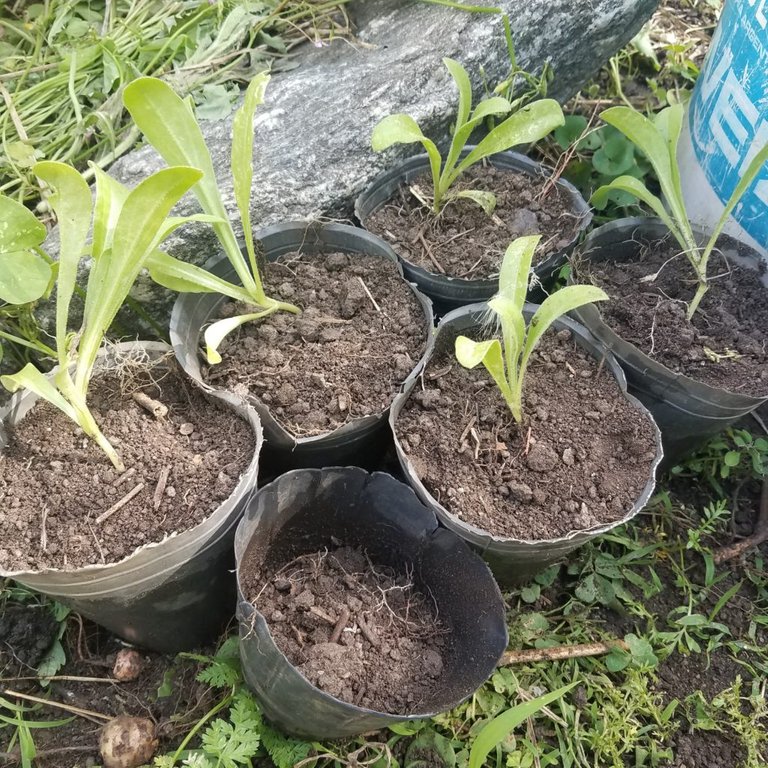
For a healthy and thriving calendula plant, planting first in a small pot and then transplanting into the garden is key. These are cold hardy plants that can be sewn during spring, summer, and fall though they do best when planted in humid & warm months. Calendula needs plenty of water which is easiest to provide if the young plants are all in one easy to water location. When the plants have several healthy leaves, they are ready to transplant into their permanent location.
Transplant in garden bed:
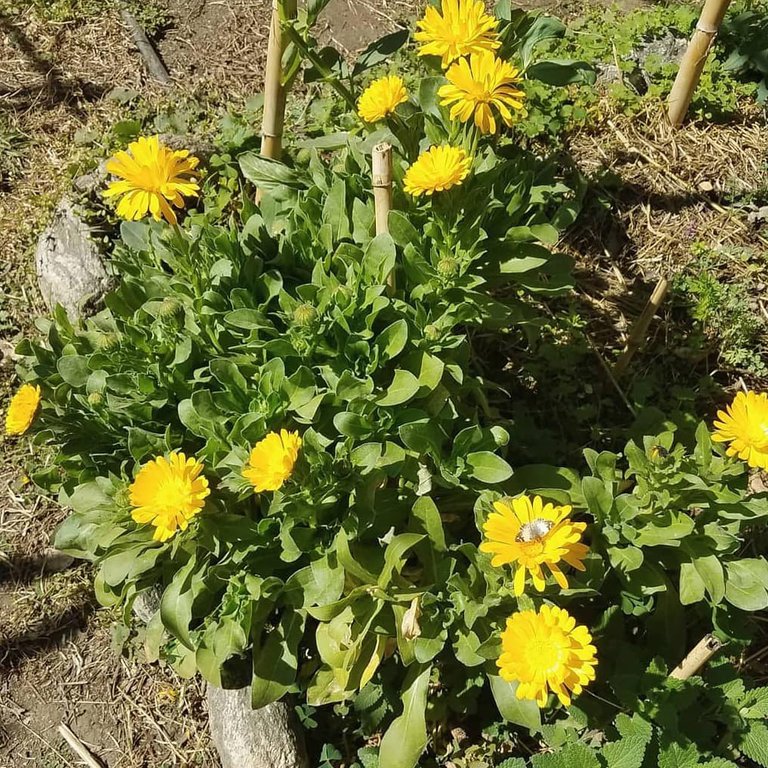
As mentioned previously, calendula need humid conditions to get established and the herb has aromatic properties that help deter pests. For both of these reasons I recommend planting calendula alongside tomatoes, kale, and other plants that are prone to insect infestation. Calendula plants need as much water as other vegetables so, planting in a well watered garden will ensure an abundant harvest of the prized calendula flowers.
Collecting and drying calendula flowers:
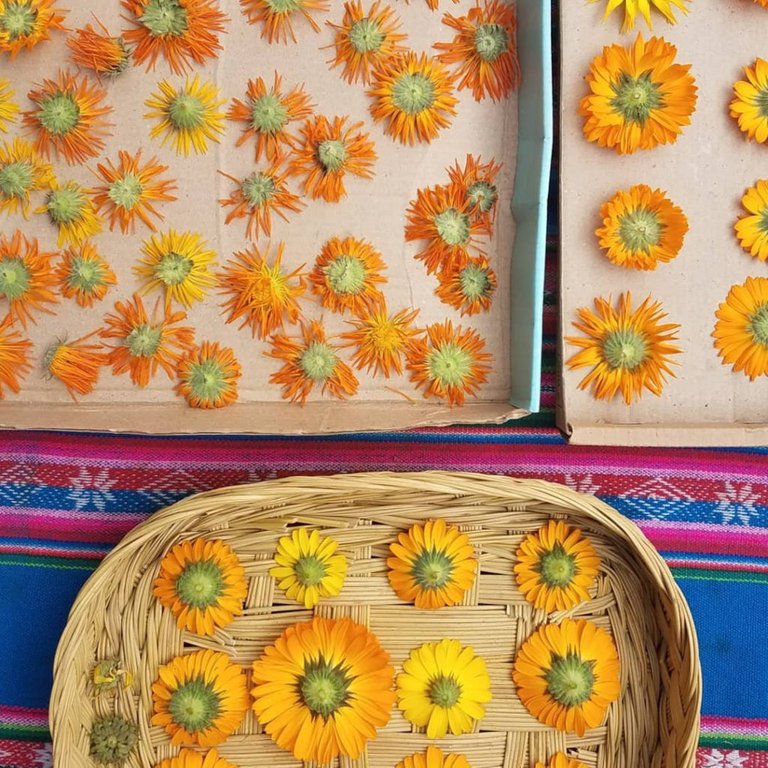
Two to three months after transplanting the calendulas should be producing plenty of flowers with new ones blooming daily. The best tile to harvest the blossoms is from mid morning to noon. It is important that the flowers are totally open as they dry much better that way. Calendula flowers are best dried flat in a warm but not sunny area. You can use a dehydrator if you have one but a shelf inside the house will also work. I myself have a covered outdoor shelf where I dry all my herbs and seeds in baskets or on cardboard lids – see photo below.
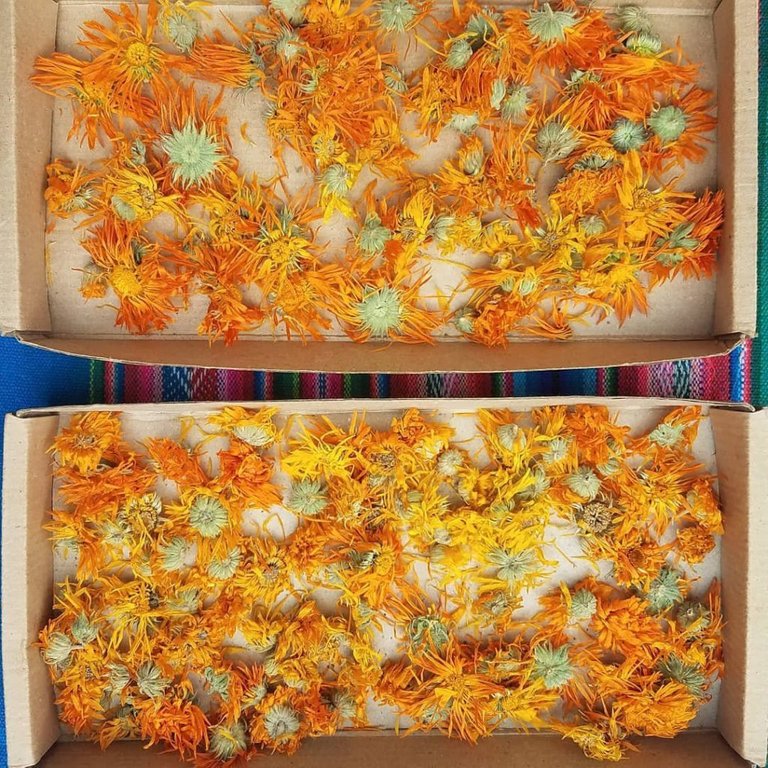
In the world of herbalism. supplies and tools are endless but in reality you can make do with what you already have. When I was traveling I used to dry herbs in cloth bags in the sun, not ideal but the point is you do not need anything fancy to begin processing herbs and making herbali medicine. Drying calendula flowers in on a piece of (clean) cardboard on your kitchen counter will work just fine.
After 5 to 7 days the flowers should be dry, you will be able to test their dryness by touch. Store the dried flowers in a brown paper bag labeled “Calendula Flowers” and the month & year. Or, instead of storing, you can use them right away. Calendula has many medicinal properties and can help with menstrual cramps and stomach pain as a tea but my favorite way to use calendula is as an herbal oil.
Making herbal oil with Calendula:
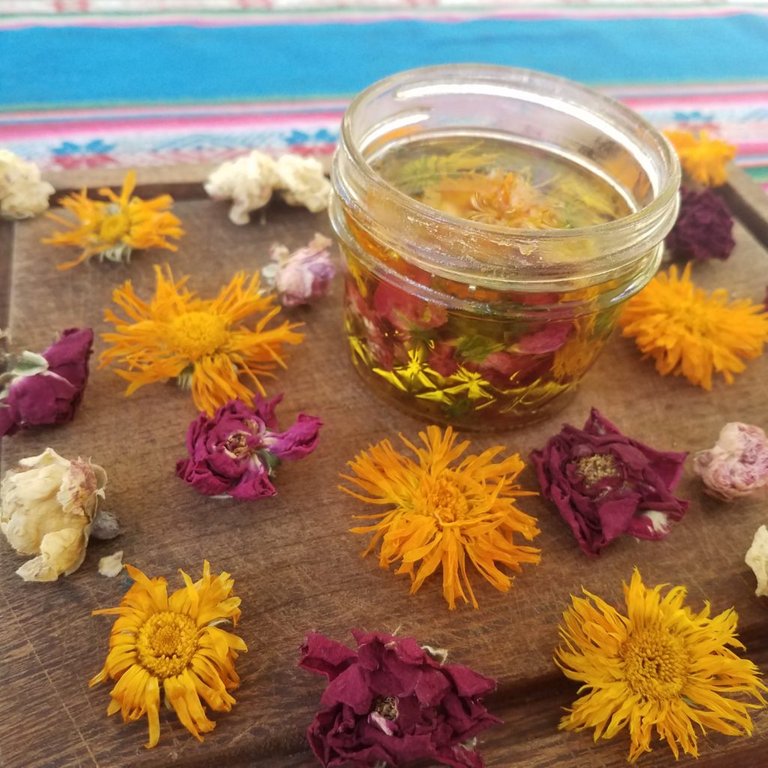
Herbal oils are simple to make and have many applications in day to daylife. An herbal oil is base oil, like olive oil, that has been infused with the medicinal properties of an herb. My favorite method is cold infusion. In the case of calendula this entails filling a jar half full with dried calendula flowers, then filling the jar entirely with your oil of choice. You can use olive oil, fractionated (liquid) coconut oil, jojoba oil, even sunflower oil! Each oil has different properties though all will soothe and moisturize the skin especially when infused with calendula. Once the oil & calendula floes have been soaking in a dark and cool cupboard for about a month it is time to separate the flowers from the oil. You can do this by using a tea strainer or a piece of cloth like muslin. Now that the oil has been separated it is ready to use as a massage oil or facial moisturizer.
You can use this oil on any part of your body, especially skin with sun damage or another form of irritation. Just be sure to start with a small drop rubbed between your hands before applying. You really don’t need to use much to receive the healing benefits and too much oil can stain clothing.
My personal use of Calendula oil:
Calendula oil is widely known to have healing effects on the skin, hair and nails and I can attest to this. I started using herbal oils about 4 years ago and my skin has made a huge transformation. Previously I suffered from a combination of dry and oily skin as well as adult acne - all of which have been immensely lessened by using calendula oil and salves. Typically I use the oil all over my body when feeling aches and on cuts or burns. Calendula oil made with my homegrown calendula flowers is practically my cure-all for skin related issues. I so hope that calendula can benefit you too!
Congratulations @libra.gardener! You have completed the following achievement on the Hive blockchain and have been rewarded with new badge(s) :
Your next target is to reach 1000 upvotes.
You can view your badges on your board and compare yourself to others in the Ranking
If you no longer want to receive notifications, reply to this comment with the word
STOPCheck out the last post from @hivebuzz:
I love calendula flowers. I grow a variety called 'Resina' and boy does it have resin! Those would normally be started by now.... maybe next year.